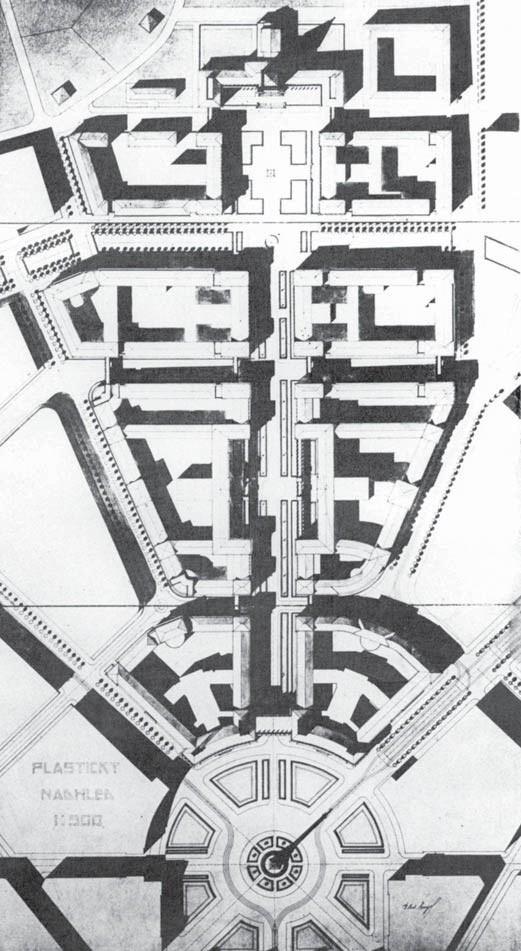
History of UCT Prague
The history of the University of Chemistry and Technology, Prague, runs in parallel to the earliest beginnings of the teaching of chemistry in today’s Czech Republic.
Alchemy from the very start
After King Charles IV founded the University of Prague in 1348, the faculty of liberal arts (later the faculty of philosophy) offered courses in the natural sciences, including mathematics, astronomy, and the basics of alchemy.
More about alchemy
In the fourth century AD, the Greek term chymeia started being used for the systematic experimental study of natural materials. The origins of this word are not entirely clear; according to one source, it emerged in Alexandria, Egypt, where alchemic activities are documented as early as the second century AD. Alchemy, as these activities later came to be known, had as its goals the transformation (transmutation) of common metals into gold and the pursuit of extended life (an elixir of youth). Alchemy has always been related to astrology, expressing its recipes in parables and myths. By around 1200 AD, alchemists already had identified a number of elements (sulphur, carbon, copper, iron, tin, mercury, silver, gold, and probably others), basic acids (such as sulphuric acid [aqua vitriolis], hydrochloric acid [aqua salis], nitric acid [aqua fortis], and “royal water” [aqua regia, a mixture of hydrochloric acid and nitric acid]), as well as some salts (alum, salammoniac), and other substances such as borax. In the seventeenth century, an attempt to isolate the Philosopher’s Stone with urine led alchemists to discover phosphorus. Alchemy can be considered the forerunner of chemistry.
In the fifteenth and sixteenth centuries, some alchemy practices moved in an empirical direction, becoming more useful to society. In the Lands of the Bohemian Crown, in the first half of the sixteenth century, Geogius Agricola summarized his experiences in mining and metallurgy while being very critical of alchemists in his pioneering work, De re metallica libria. Nevertheless, in Rudolf II’s court, at the turn of the seventeenth century, alchemists were still prominent. All in all, from today’s point of view, alchemy deserves our respect.
Under Jesuit rule, the teaching of natural sciences at Charles-Ferdinand University was suppressed. An exception to this was Jan Marek Marci, professor of medicine and personal doctor to Emperors Ferdinand III and Leopold I.
Only at the end of the eighteenth century, with Enlightenment-based reforms and the transfer of the university to state administrative hands, was medical education introduced, with an emphasis on the natural sciences.
The development of manufacturing and the beginnings of the industrial revolution in the second half of the eighteenth century in the Czech Lands required the creation of another university, Prague Polytechnic. As early as 1707, the Czech Professional Engineering School was under development. Franz Joseph Gerstner’s vision, inspired by Polytechnic Institute in Paris, led to Prague Polytechnic’s transition to the Professional Polytechnic Institute in Prague in 1806. The Institute had mathematics and chemistry departments and, from its opening until 1870, it was located in St. Wenceslas Seminary (today’s Husova Street). During the nineteenth century, chemistry became an important area of research at the University of Prague.
Chemistry instruction at Prague Polytechnic
At the beginning of 1803, Emperor Francis II signed the charter for Prague Polytechnic (sometimes referred to as the Royal Professional Technical College), where, two departments were opened on 10 November 1806, mathematics and chemistry. The University of Chemistry and Technology, Prague, is the direct successor of this chemistry department.
In the chemistry department, instruction included general and applied chemistry focusing on the most important Czech industrial sectors: production of glass, iron, and bleaching and dying agents for textile applications.
A growing demand for knowledge regarding the raw materials for glass and iron production spurred the creation of a mineralogical department that, starting in the mid-nineteenth century, also engaged in preparing geological specialists for large-scale road and railway construction. The first mineralogy professor at Prague Polytechnic was Franz Xaver Maximilian Zippe, who established a mineralogical collection there in the first half of the nineteenth century which was meticulously carried on being continuously enhanced through generations of his academic successors. This collection, located at today’s University of Chemistry and Technology, Prague, is the second most valuable (after the National Museum’s collection) mineral collection in the Czech Republic.
Important professors at Prague Polytechnic included Karl Augustin Neumann, Josef Johan Steinmann, Karel Josef Napoleon Balling, Václav Jan Staněk, Vojtěch Šafařík, Bohuslav Raýman, and Emil Votoček.
At the turn of the twentieth century, Prague Polytechnic’s chemistry department taught inorganic, organic, analytical, and physical chemistry with intensive laboratory components, with a number of specialities such as mineral, gas, and sugar technical analysis including laboratory instructions.
The space required for laboratory instruction necessitated the construction of a special building for chemistry on Trajanova Street, where the first classes were held in 1911.
Instruction at the University of Chemical and Technical Engineering
During the reorganization of Prague Polytechnic in 1920, the Faculty of Chemical and Technical Engineering was created as one of seven faculties at Czech Technical University.
Professor Emil Votoček was a leading figure at the newly founded faculty. During his tenure, a number of important chemists were trained here, including Otakar Quadrat and Rudolf Lukeš. Professor Otto Wichterle is known as the inventor of soft contact lenses.
In 1928, Vladimir Prelog graduated from the university, receiving his doctorate here as well. As Professor at ETH Zurich he received the Nobel Prize in Chemistry in 1975
UCT Prague acknowledges Professor Votoček’s legacy and named its highest award for graduate students, the Votoček Scholarship, in his name. Furthermore, the university bestows its highest awards, the Emil Votoček Medals, for extraordinary individual contributions to the field of chemistry.
On 21 June 1925, President T.G. Masaryk laid the foundation stone for the construction of the first buildings intended for the Czech Technical University’s Dejvice campus, intended to mirror the modern, aesthetic architecture of this district. The first building was intended for the Faculty of Chemical and Technical Engineering and it serves as UCT Prague’s main building even today. Instruction started in the building in 1933. Construction of the other planned buildings stalled due to financial problems. In 1937, a second building for the faculty was completed.
In 1952, the Faculty of Chemical and Technical Engineering was separated from Czech Technical University by government degree. Under a newly established “College of Chemistry in Prague” there emerged three units:
- the Faculty for Inorganic Technologies,
- the Faculty for Organic Technologies,
- and the Faculty of Food Technologies.
A year later, a government decree changed the name to its current one, the University of Chemistry and Technology, Prague. That same year (1953), a fourth faculty was created, the Faculty of Fuel and Water Technology, which (in 1959) was changed to the Faculty of Fuel Technology and Water and, in 1960, the Faculty of Automation and Economics was established.
The curriculum of the university included the fundamentals of mathematics, physics, and physical chemistry. At the end of the 1960s, the Faculties of Inorganic and Organic Technologies were merged into today’s Faculty of Chemical Technology, and the Faculty of Food Technology was renamed the Faculty of Food and Biochemical Technology. The Faculty of Automation and Economics became today’s Faculty of Chemical Engineering. The Faculty of Fuel Technology and Water’s curriculum and name were changed in 1991 to the Faculty of Environmental Technology.







